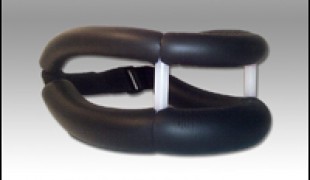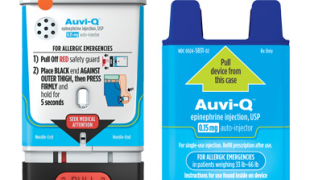- 3514
- 267
- 6
- 5
- 0
- Help Ukraine
About the solution
Roald Dahl, the beloved author of children's literature, had a profound interest in medicine, largely fueled by personal family tragedies. His connection to medicine was deepened by the health challenges faced by his son, Theo, and his first wife, Patricia Neal.
In 1965, Dahl's wife Patricia suffered a severe brain hemorrhage that led to a stroke. This left her unable to speak and paralyzed on her right side. Dahl was intimately involved in her rehabilitation process and was dissatisfied with the minimal rehabilitation that was being offered. He initiated a daily six-hour rehab regime for her, leading to significant improvement in her condition and eventually allowing her to return to her acting career. During her recovery, Patricia would sometimes invent new words when she was unable to find the ones she wanted to use. This experience with neologisms influenced Dahl's work, particularly in the creation of the unique language used by the character, the BFG (Big Friendly Giant), in The BFG book. The BFG speaks in a playful, mixed-up language that Dahl called "gobblefunk", which includes many made-up words, much like the ones his wife used during her recovery. Dahl's approach to his wife's rehabilitation was documented in a guide he wrote, which was adopted widely, significantly contributing to the field of stroke rehabilitation.
In addition to his wife's stroke, Dahl's connection to medicine was also deepened by the health challenges faced by his son, Theo. Theo suffered from hydrocephalus, a condition caused by a buildup of fluid in the brain, following a car accident. This led Dahl to collaborate with neurosurgeon Kenneth Till and hydraulic engineer Stanley Wade to invent the "Wade-Dahl-Till" (WDT) valve in 1962. A standard shunt installed to drain excess fluid from his brain frequently jammed, causing pain, blindness, and risking further brain damage. The team designed a new mechanism using two metal discs each located in a restrictive housing at the end of a short silicone rubber tube. The invention, characterized by low resistance, ease of sterilization, no reflux, robust construction, and negligible risk of blockage, was used successfully in thousands of operations and is a testament to Dahl's unique contribution to medicine. The WDT valve was taken into production in 1962, and the first patient was treated around June 1962. The WDT valve was estimated to have been used in two to 3,000 children worldwide before it was superseded by novel types of valves.
Despite his fame as a writer, Dahl's impact on the medical field is a remarkable facet of his life.
This solution shall not include mention to the use of drugs, chemicals or biologicals (including food); invasive devices; offensive, commercial or inherently dangerous content. This solution was not medically validated. Proceed with caution! If you have any doubts, please consult with a health professional.
DISCLAIMER: This story was written by someone who is not the author of the solution, therefore please be advised that, although it was written with the utmost respect for the innovation and the innovator, there can be some incorrect statements. If you find any errors please contact the patient Innovation team via info@patient-innovation.com
-
-
273
-
0
-
3672

shanesneckbrace
VENTILATION
WALKING: Walking
BODY BALANCE: Maintaining body balance
STANDING UP: Standing up from a seated position
SLEEP FUNCTION: Resting
CAREGIVING
Spinal Cord and Nerve Root Disorders
Treatment/Surgical device
Gait abnormalities (e.g., walking difficulties, unsteady gait)
Tremors
Muscle cramps or spasms
Stiffness or rigidity (difficulty moving)
Paralysis of the legs and lower body
Muscle weakness
Loss of balance
Numbness or tingling in the extremities
Fatigue
Managing pain
Promoting self-management
Preserving Organ Function
Managing Neurological Disorders
Recovering from Traumatic Injuries
Restoring Blood Circulation
To improve Treatment/Therapy
Preventing (Vaccination, Protection, Falls, Research/Mapping)
Neurology
Neurosurgery
Orthopedics
Physical Medicine and Rehabilitation
Rheumatology
Sports Medicine
United States
-
-
-
358
-
0
-
3853

Hip & co- a mum's invention for hip dysplasia
CAREGIVING
BODY BALANCE: Maintaining body balance
STANDING UP: Standing up from a seated position
WALKING WITH A WALKING AID: Walking with a walking aid
WALKING: Walking
Hip Dysplasia
Assistive Daily Life Device (to help ADL)
Walking Aid (wheelchair/walker/crutches)
Difficulty walking or moving
Muscle weakness
Limited range of motion
Muscle pain or stiffness
Loss of muscle coordination
Muscle cramps or spasms
Joint deformity
Joint redness or warmth
Swelling or inflammation
Difficulty bearing weight
Numbness or tingling in the extremities
Frequent falls
Joint pain or swelling
Restoring mobility
Managing pain
Promoting self-management
Preserving Organ Function
Recovering from Traumatic Injuries
Maintaining Balance and Mobility
Raise awareness
Caregiving Support
General and Family Medicine
Orthopedics
Pediatrics
Australia
-
-
-
659
-
0
-
9639

Twins create Auvi Q to help themselves fighting life threatening allergies
CAREGIVING
VENTILATION
Allergic reaction (food
drugs
material/chemicals)
Assistive Daily Life Device (to help ADL)
Treatment/Surgical device
Promoting self-management
Manage Medication
Preserving Organ Function
To improve Treatment/Therapy
Preventing (Vaccination, Protection, Falls, Research/Mapping)
Raise awareness
Caregiving Support
Dermatology
General and Family Medicine
Intensive Care Medicine
Pediatrics
United States
-
 en
en